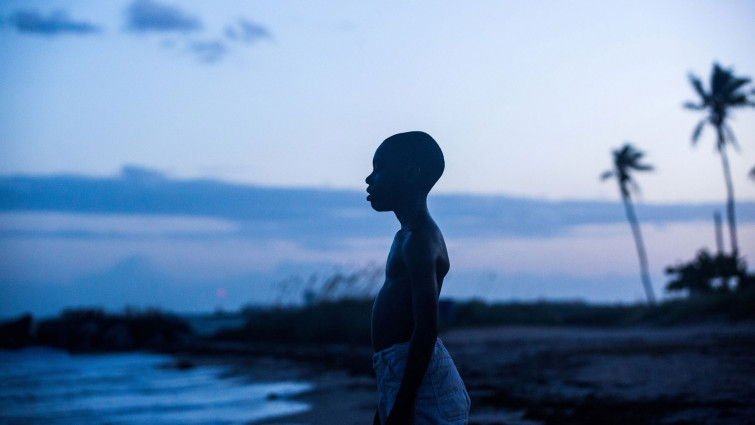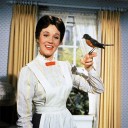

Member review

Moonlight
Coming-of-age drama focusing on a young black man growing up in a poverty-stricken Miami neighbourhood where he struggles to fit in.
Certificate
Duration111 mins
Review by
-
 Ella, 17
Ella, 17 - 2 reviews
Utterly Refreshing Cinema
“My name is Chiron, people call me Little.”
The first words uttered by ‘Moonlight’s’ protagonist Chiron make it clear to spectators that at its heart ‘Moonlight’ is a film about the universal theme of personal identity. Whilst the story may ostensibly seem individualistic- detailing the distinct life of this young black American man growing up in poverty stricken Miami - the notion that seminal moments from our childhood define the person we emerge to be as adults, which the films 3 act structure reflects, is something anyone can relate to and reflect upon.
Barry Jenkins’ script illustrates the process of growing up in an incredibly realistic way. For example, the way that people can drift into and out of our lives, people who are key into defining who we are and become, is beautifully reflected in the character of Juan (played excellently by Mahershala Ali, who won an Oscar for his role) who dominates the first act (titled ‘Little’) of Chiron’s life yet is absent in the two following acts. He has such a profound effect on Chiron that in the third act of the film (‘Black’) , his physicality, costume and profession come to mirror the man who defined his childhood life chapters .Yet, it seems Chiron, at this point, has forgotten the kindness and friendliness that Juan offered – qualities that drew us as spectators and ‘Little’ towards the character in the first place- becoming a social recluse.
‘Moonlight’ is a refreshing take on the ‘coming of age’ genre, which often idealistically portrays childhood and adolescence. Not afraid to depict the taboo – sexual experiences, extreme violence- Jenkins paints a fully rounded portrait of growth, not a tried and tested Hollywood manufactured prototype. Again, I think Jenkins is able to do this because his script and direction maintains a sense of naturalism and realism throughout. This realism allows us as spectators to believe we are being transported into a real life situation because there is no filter and no holding back. The realism causes spectators to empathise more with Chiron as a result. Our empathy is also aided by the fact that the camera rarely strays from Chiron and his actions are what dominate the plot of this film. We are forced to zone in on his particular life experiences and are not allowed to escape at any point, even if we find it difficult to watch.
This realism is created very much through the performance styles. Naomie Harris, who is utterly unrecognisable in her role as Paula (both physically and verbally playing an extremely different role to her Miss Moneypenny of the James Bond franchise), Chiron’s crack addicted mother, brings depth to a role which would usually be one dimensional . The fact that she violently slams the door on Juan in ‘Little’ and aggressively demands Chiron give her for money for drugs in the second act ‘Chiron’ – committing acts of hate against two characters we, the audience, are encouraged to side with – should ostensibly make us hate this character. Her vile treatment of others should allow her no redeeming qualities. Yet, there are little nuances in Harris’ performance which allow us to see Paula beyond her hugely faulted actions – for example when her hands shake as she lights a cigarette. These clever, little moments create doubt in the audience’s mind as to whether this character is fully malevolent. This is a refreshing take, as at first Paula seems to be a reiteration of a stereotypical role in a film centred on black America.
However, the cinematography of the film opposes the realism that is created in the other microfeatures. The way that this area, full of poverty is shot by James Laxton, reminds us that there is beauty to be found in everything. For example, within the opening of the film, the seemingly mundane activity of Chiron being driven by Juan is shot in such a way that accentuates the colour of landscapes both in the interior and exterior of the car. I liked how the camerawork was incredibly subjective, the integrated intimacy in a variety of close ups with wider shots observing the situation allowing spectators to assess Chiron’s life themselves and takeaway their own ideological opinions. My favourite use of the camera was in ‘Little’ when the young Chiron and Kevin are fighting. The camera uses a progression of extreme close up shots of their hands, feet and faces – an obscure way to film a play fight which works to foreground what the relationship between the two will become in the second act. The colour palette of the film was also rather interesting, as it was immediately clear that there was a lot of colour grading occurring to accentuate the lush, tropical nature of Liberty City (e.g. it brings out the green in the palm trees which litter the film); exaggerating the contrast between nature and the urban.
To conclude, ‘Moonlight’ is feels to me truly refreshing in multiple ways. Not only is it the only LGBTQ+ film to have an all black cast – therefore being truly refreshing in terms of introducing a multiplicity of life stories, representations and experiences into the Hollywood mainstream- but it is shot in an atypical way for a film dealing with social issues (it doesn’t adopt a documentary style but is rather stylistic fashion). If you want to experience something different and expand your cinematic horizons, then ‘Moonlight’ is definitely the film for you.